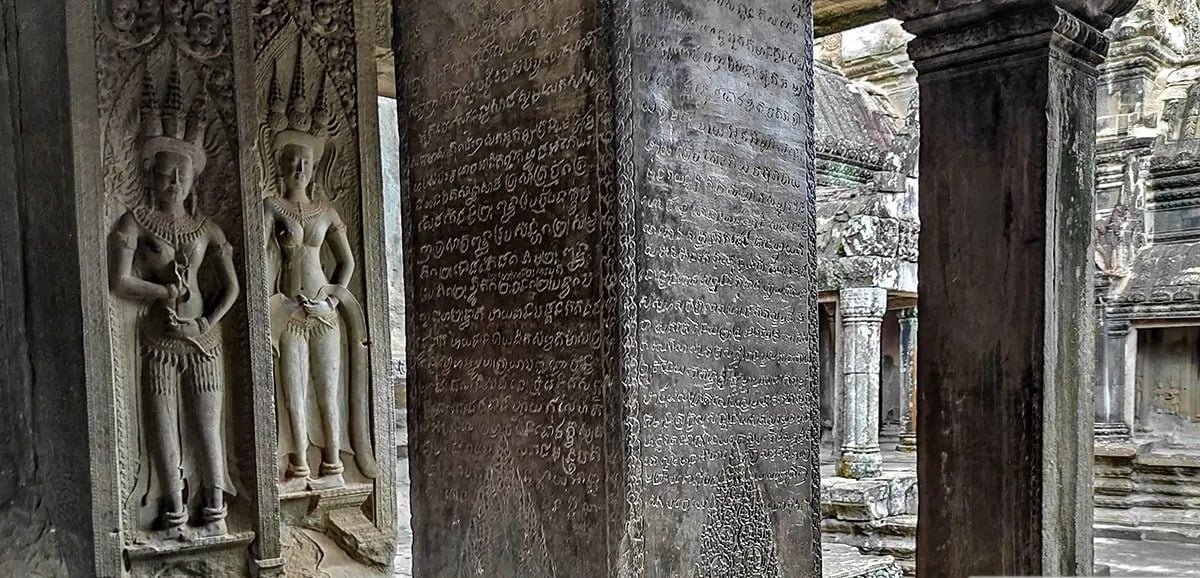Khmer inscriptions are an invaluable source of historical information about the ancient Khmer civilization in mainland Southeast Asia. These inscriptions, which have been found on various materials such as stone and metal ware, provide insights into the language, culture, religion, legislation, economy, and societal structure of the Khmer people.
One of the significant aspects of Khmer inscriptions is the use of different languages such as Sanskrit, ancient Khmer, and occasionally Pali. Sanskrit inscriptions, ranging from the 5th to the 14th century, demonstrate the extensive knowledge of poetic rules, grammar, and rhetoric of the Khmer civilization. They also reveal the use of the decimal system and the invention of zero in ancient Khmer, predating its use in India.
Ancient Khmer inscriptions, which appeared in the 7th century, primarily present detailed inventories of offerings received by sanctuaries. They offer valuable information about the culture and history of Cambodia and have been found to align with the Royal Chronicles of Cambodia.
Pali inscriptions in Khmer provinces are scarce, but they indicate the adoption of Buddhist teachings and the use of Pali as a sacred language.
Khmer inscriptions also shed light on religion and reveal the influence of Indian philosophical and theological concepts. They demonstrate the movement of religious ideas across the Indian Ocean and provide evidence of Pancharatra and syncretistic Vaisnavism in ancient Cambodia.
Additionally, Khmer inscriptions record the existence of a state court system for maintaining land borders and settling land disputes. They mention markets and marketing in Angkor, suggesting the presence of a complex economic system based on commodity settlements, foreign currencies, and exchange.
The inscriptions give insights into Khmer society and the use of caste in ancient Cambodia. They also contain references to medical science and mention artists, dancers, musicians, and singers involved in worship and daily rituals.
The study of Khmer epigraphy began in the late 19th century and has been enriched by the works of scholars such as H. Kern, Bart and Bergaigne, George Cœdès, and more recent researchers including Kamaleswar Bhattacharya, Matsuura Fumiaki, and Gerdi Gerschheimer.
Khmer epigraphy plays a vital role in understanding and preserving the history and cultural heritage of Cambodia. It has been taught at universities, and efforts have been made to publish and disseminate the knowledge obtained from these inscriptions.
In general, Khmer inscriptions are not only significant from a historical perspective, but they also serve as a marker of national identity. They highlight the extensive legacy and accomplishments which the Khmer civilization has left behind.







